By
Xavier Riaud
The first case of forensic dentistry in France
In 981, Hugues Capet (v. 940-996) who was then Duke of the Franks from 960 to 987 went to Rome to meet Otton II, the German Emperor (955-983) in order to negotiate an alliance between them two. Informed of the Duke’s action, Lothair (941-986) who was then King of Franks considered Capet’s conduct as a crime of high treason and decided to intercept him on his way back.
For her part, Emma who was Lothair’s wife and the Queen of France (v. 948-988), wrote to her mother, the Empress Adelaide (931-999), who was also Otton II’s mother, to convince her of the Duke’s duplicity and to imprison him in Italy. In her letter to her mother, the Queen had made Hugh Capet’s full description. She described with meticulous care his eyes, his lips, his teeth, his nose and even the sound of his voice. Informed on time, it is disguised as a groom that Hugh Capet came back to Paris without a hitch.
John Talbot (1384 ( ?)-1453)
Henry VI of England (1421-1471)’s famous captain, Talbot was killed by soldiers of the French army during the battle of Castillon near Bordeaux. His body was found by his adversaries the next morning of the confrontation. His body was so mutilated that it was extremely difficult to identify him. Therefore, the French decided to bring the dead soldier’s herald before them, which was previously captured. So much so like the others, he could not officially identify his master. Yet, he kneeled down and “when he put one of his right hand’s fingers into the body’s mouth to see if there was a missing molar on the left side that he knew his master had lost, he finally found what he was looking for and exclaimed: “Master, it’s you!”…With this identification, the debate on the body’s identity came to an end. »
Charles the Bold (1433-1477)
Duke of Burgundy in 1467 and Louis XI’s sheer opponent, Charles died in Nancy on January 5, 1477. It was only three days after that his body was found on the bank of the so-called Saint Jean ponds. He was naked and was partly devoured by the wolves. At that time, robbing dead people was common practice. Charles was known to be accompanied by an Italian groom called Baptiste and who was called as a witness and examined less than a week after the battle. John of Troyes related: “… And in this place, the next Monday which was following the battle, the groom told us straight that the Duke of Burgundy was dead, totally naked and surrounded by forty men who were also naked and lying on the ground. And the Duke had a gash from the ear to the teeth which had been made by a halberd, two wounds in the thighs made by a spear and a third one on the lower part of one of his legs. Six elements allowed us to clearly recognize the Duke of Burgundy. The first and most important element came from his upper teeth which he had lost when he had fallen once…”
Napoleon IV (1856-1879)
Caught in an ambush by the Zulus, the Emperor’s son did not succeed to escape on time. His body was unrecognizable as he had received 17 blows from Zulu lances to his face. He was found completely naked. The British authorities thought it indispensable to identify the young prince’s body. The description of his corpse was performed by Doctor Scott, then by Baron Larrey, Napoleon III’s former surgeon, the son of the illustrious surgeon of Napoleon the 1st who attended the opening of the coffin on July 11, 1879, at Chislehurst. Doctor Baron Corvisart, the son of Napoleon I’s “favourite doctor”, joined Larrey for the examination of the body. One of the 17 wounds, which was less serious than the others, was found on the right side of the upper lip, which was torn open. The blow which caused the wound also damaged one of his teeth, which was shattered into fragments. Soon after that discovery, an examination of his dental structure was carried out. It was Dr Thomas W. Evans (1823-1897), the imperial family’s American dentist who was living in Paris since 1847 and where he died, who was in charge of it. Before carrying out his examination and in order to perform an accurate identification of the body, Evans presented a pre-existing map of the prince’s teeth, based on those that he had previously “gold-filled”. Those specific fillings were noticeable even if other dentists had worked on the prince’s teeth after the American.
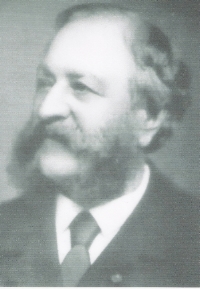
Dr Thomas W. Evans.
Godon, a pioneer?
In 1887, Charles Godon (1854-1923), founder and dean of the School of Dentistry in Paris (1880), chairman of the World Dental Federation from 1901 to 1904, then from 1909 to 1910, proposed to the Society of Odontology of Paris: “When in all cases the exterior features do not help to recognize a body, teeth identification should be carried out; for this, a dentist would be made responsible for drawing up the exact diagram of the state of the dental system indicating all the partial or total restorations which would have been made (dental fillings, gold crowns and restorations and prostheses, etc.) or indicating missing teeth or any particularities on present teeth.” This motion was immediately passed.

Dr Charles Godon.
The Bazar de la Charité (1897)
On May 4, 1897, 124 people died in the fire of the Bazar de la Charité because of a mishandling of the projectionist’s equipment (using a system of ether and oxygen rather than electricity) which caught fire. Many of the victims were aristocratic women, the most notable of whom was the Duchess of Alençon, Sophie Charlotte of Bavaria, sister of the famous Empress of Austria Sissi. Her body was the most charred. The next morning, around noon, about thirty bodies had not been identified. The consul of Paraguay had the idea of seeking the help of the victims’ dentists. Dr Isaac Davenport, Sophie-Charlotte’s dentist, came with his client’s medical card: he had written 17 consultations of two years, the last one dating back to December 15, 1897.
He identified her body and his statement was supported by the justice. It was a first for France. Three dentists carried out the identifications: Dr Charles Godon, Dr Isaac Davenport and Pr Ducourneau, teacher at the Odontotechnical School of Paris. The practitioners’s work was reported by Oscar Amoëdo y Valdes.
On July 7, 1898, this Cuban dentist and professor at the Odontotechnical School of Paris defended his thesis in medicine: “The dental art in legal medicine” and obtained the title of Doctor in medicine. Professor Brouardel, president of the thesis jury, said of the candidate’s work: « This is not a thesis but a treaty of odontology. It filled in all the great gaps which remained in the field of forensic identification”.
This work of 608 pages was published by Masson & Cie Editions. It was acknowledged by the whole dental profession to be the authoritative source on this subject. This is when dental identification, which had been inexistent until then, was born. A great number of pages were devoted to the techniques of identification, to bites, to the abrasion of teeth and to teeth after death. To complete it, he commented the dental jurisprudence. He concluded his study with 52 observations devoted to identification. On August 4, 1899, to the American Dental Society of Europe, he presented an essential communication entitled “The identification of corpses by a dental expert”. “The role of the dental expert in carrying out identifications cannot be called into question nowadays. The observations that we bring are sufficient converging arguments. Sometimes, the dentist uses special anomalies as the cornerstone of his conclusions; sometimes, he uses a restoring operation for the same goal. However, even though his observations often required the justice to call upon him, many times he was neglected. (…) His role could not be put into question and we think that in future, dentists will be called up in difficult situations and that it will be no accident; that was though about since the beginning and it will prevent painful surprises. »
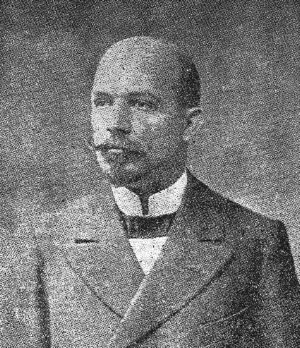
Dr Oscar Amoëdo y Valdes (1863-1945).
Edmond Locard (1877-1966) and the study of marks
In 1910, in Lyon, Edmond Locard inaugurated the very first police laboratory of scientific techniques. Specialized in the study of residual marks left on crime scenes, he never left out teeth identification in his investigations. Indeed, the laboratory was created during the Dessort Affair. A theft was committed on December 21, 1910 in a bakery located on 159, boulevard de la Croix-Rousse in Lyon. One of the culprits had bitten into some of the little tarts with chestnut cream. The marks of the incisors allowed to lead his investigation towards a child of the neighbourhood who had been easily identified.
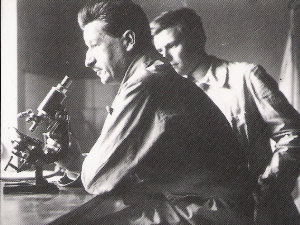
Dr Edmond Locard.
First World War(1914-1918)
This war caused the death of 1,350,000 soldiers of the French army. The number of the missing soldiers oscillates between 100,000 and 600,000. “The issue of the missing was such a problem immediately after the war that different means (anthropometry, photograph albums, oral identifications) were implemented to identify these anonymous corpses without forgetting the amnesic soldiers.”“In all the French churches and town halls, the Ministry of Pensions put up paintings indicating the objects found on the bodies of the French soldiers who still had not been identified in order to give indications on their civil status. Among those objects were found: prosthetic items that people could easily recognize; either by the dentist who had made them or by the missing soldiers’ family with dental cards given by the practitioner. On these notices were written the precise location of where the body was found and the description of the characteristics of the prosthetic item found on the body: maxillary or mandibular prosthesis, number and type of teeth (ivory teeth, gutta teeth), type of material used for the base (gold, rubber), type and metal of the clasps (gold in general). (…) Those missing notices only mentioned prosthetic items and not the general state of the denture which limited the investigation to those wearing prostheses.”
Regarding the forensic dentistry in such a murderous context, Henri Lentulo wrote: “It does not seem necessary to insist further on the absolute accuracy of a process which already proved itself and which will be often used now that it is even in the frequent exhumations of the dead during the First World War even though it still struggling to be acknowledged. »
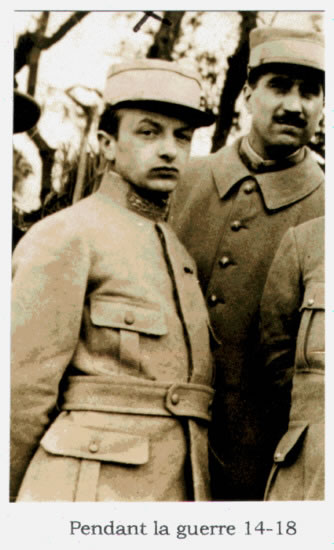
Henri Lentulo (1889-1981), military dentist during the First World War.
Ginette Neveu (1919-1949)
A violonist, Ginette Neveu took on board the Air France flight, the « Constellation », for a series of concerts. On October 27, 1949, the plane crashed down a mountain in the Asores. Ginette was lying next to her Stradivarius. Her body was given back to her family. And yet, her relatives wondered about her death. Indeed, her body had a chain with an Egyptian medallion; her fingers had long and pointed nails which was unusual for a violinist. She was also wearing clothes that they did not remember at all. The parents decided to question her death. Her coffin was carried to the forensic institute where finally, no doubts remained. The body was not Ginette’s. At the end of November, another body was exhumed in the region of the Haut-Rhin. After the dental examination and that of her cut nails to play violin, Ginette Neveu was identified (Georget & Boutin, 1996).
Other disasters, other dental identifications…
Following the disaster of Ermenonville where a DC10 crashed down on March 4, 1974, the method of Gustafson (1947) was used to identify the age of the bodies from the study of their teeth. The forensic investigation was favored. A series of additional dental examination were carried out. A professor of medicine from Poitiers presided.
When on July 11, 1978, a truck carrying propylene blew up next to « Los Alfaques » camping, near the town of Alcanar in Spain, post-mortem examinations were entirely carried out on the 217 bodies. Samplings on jawbones and odontograms were systematically carried out. The victims were all identified.
1982
In France, during the disaster of the “motorways of the sun” on July 31, 1982, 53 people, among whom 44 children aged from 6 to 15, died charred in the fire of a bus next to Beaune. A magistrate summoned a dentist from Dijon, Doctor Claude Laborier, an expert of the Court of Appeals. It was the first time that a dentist was called upon to carry out procedures of identification. It was exclusively due to forensic odontology that some adults were recognized. The use of radiographic examination of the jaws helped to successfully identify a teenager which had been mistaken for a bus driver (Laborier, 2008).
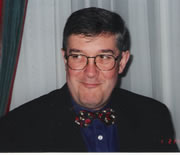
Dr Claude Laborier (1941- ).
The French Society of Forensic Odontology
On September 1989, the DC10 of the UTA was the victim of a bomb attack. 159 bodies were found. 105 of them were identified. For the first time, a multidisciplinary team was summoned for the identification. It was made up of doctors, toxicologists, radiologists and dental surgeons. Even though a French society of legal odonto-stomatology had existed before, the immediate consequence of this attack was the creation of the French Society of Forensic Dentistry which was founded in 1990 by Dr Danjard, Dr Georget, Dr Laborier and Dr Welsch. The first congress of the association occurred in Dijon under the supervision of Professor Weill and Professor Marin, the then chairman of the French society of legal medicine and criminology.
Lamendin’s formula for the determination of age (1990)
In 1947, Gustafson used six criteria of physiological adjustments of teeth; all were examined according to ageing but this meant to carry out inclusions and the realization of thin blades with polished sections. In 1988, Lamendin suggested an easier version of Gustafson’s formula which only relied on three criteria. However, the young Frenchman thought it was not reliable.
In 1990, he defined a method which only relied on two criteria and which took into account the connections between the height of dentine translucency, the height of periodontitis (without obvious pathology) with the height of the root. This was Lamendin’s formula. In 1996, Hélène Martin presented the use of dental cement layers as criteria of age. In 1999, Guy Collet studied the colour of dental roots from people of different ages and backgrounds. Therefore, he created a color model which is a benchmark today.
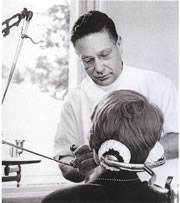
Dr Henri Lamendin (1928- ).
Perpetually writing History
On January 20, 1992, an Airbus A320 from Lyon-Satolas crashed upon the Mount Sainte-Odile of 800 meters high (France). There were 87 victims. The IRCGN (the Institute of Criminal Research of the National Gendarmerie) got involved for the first time. A team of dental surgeons also got actively involved in the identification of corpses.
In December 1996, Dr Charles Danjard and Dr Laborier got involved in the identification of the victims of the Order of the Solar Temple. For this occasion, the sampling of the jawbones was systematically achieved. Likewise, a panoramic X-ray photography was carried out on all the corpses.
In March 1999, the same experts identified the 39 victims of the fire of the Mont Blanc Tunnel. The two men had to identify extremely charred corpses which totally changed the bibliographical data of the carbonization of teeth and prosthetic items.
On July 25, 2000, Air France Flight 4590 was a Concorde flight which took off from Charles de Gaulle International Airport and which crashed on the Hotel known as the “Hôtelissimo” in Gonesse, France. The use of photography was systematic. Therefore, marks were kept and exhumation could be avoided. 450 slides and 250 photographies were taken. Out of 113 corpses, there were 112 dental identifications. Dr Laborier reported that the 113rd victim which was lacking teeth was identified by default thanks to the list of passengers since his dentures were never found.
In April 2005, 26 French dentists (Dr Rallon, Dr Hutt, Dr Labyt, Dr Berger, Dr Georget, …) were sent to Thailand to gather ante-mortem and post-mortem information in order to identify the Tsunami victims.
On May 6, 2007, when a plane of the Multinational Force crashed in Egypt’s Sinai killing 8 French soldiers, Dr Joly was sent there.
As for the French team of reserve dentists, among which were some members of the French Association of Dental Identification, it was sent to Tongo days after the helicopter crash of June 3, 2007 which killed two Frenchwomen.
Likewise, it is Dr Danjard who also got involved in the identifications of the 26 victims of the Polish bus which crashed in a ravine of Vizille in Izère, France, on July 22, 2007. To be continued…
The Unit of Odontological identification
“The Unit of Forensic Dentistry (l’Unité d’Identification Odontologique (UIO)) is an organization which was created by the National Council of the Order of Dental Surgeons (Conseil National de l'Ordre des Chirurgiens-Dentistes) and whose statutes were approved by the session of April 13, 2002. In the case of disasters, it suggests practitioners who are trained to carry out forensic identifications, who can be mobilized 24 hours a day with a simple call by the authorities, to competent judicial authorities…”
|